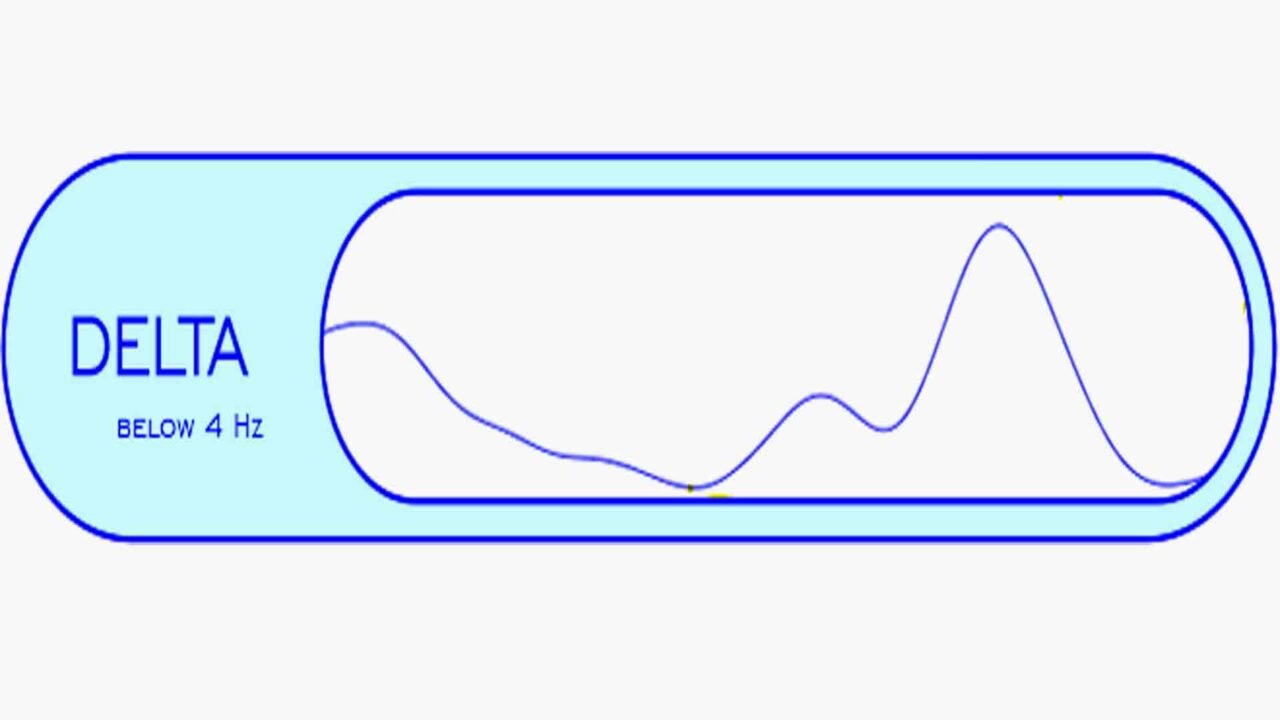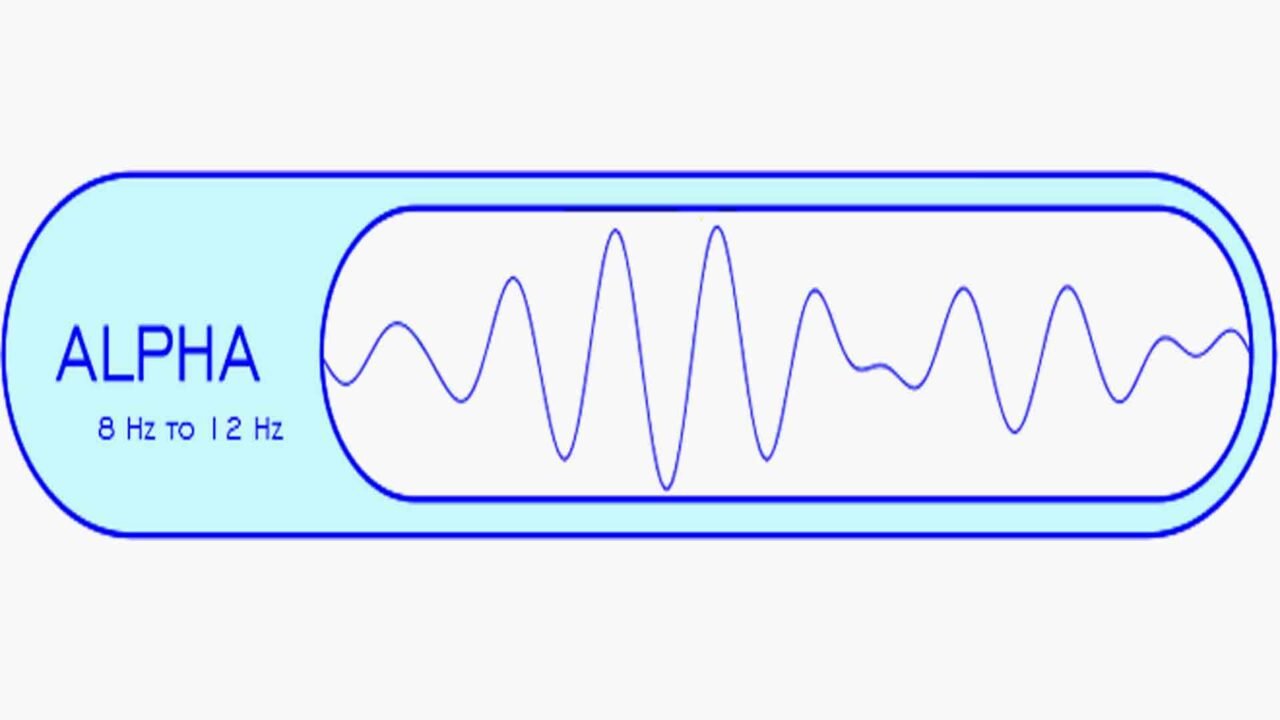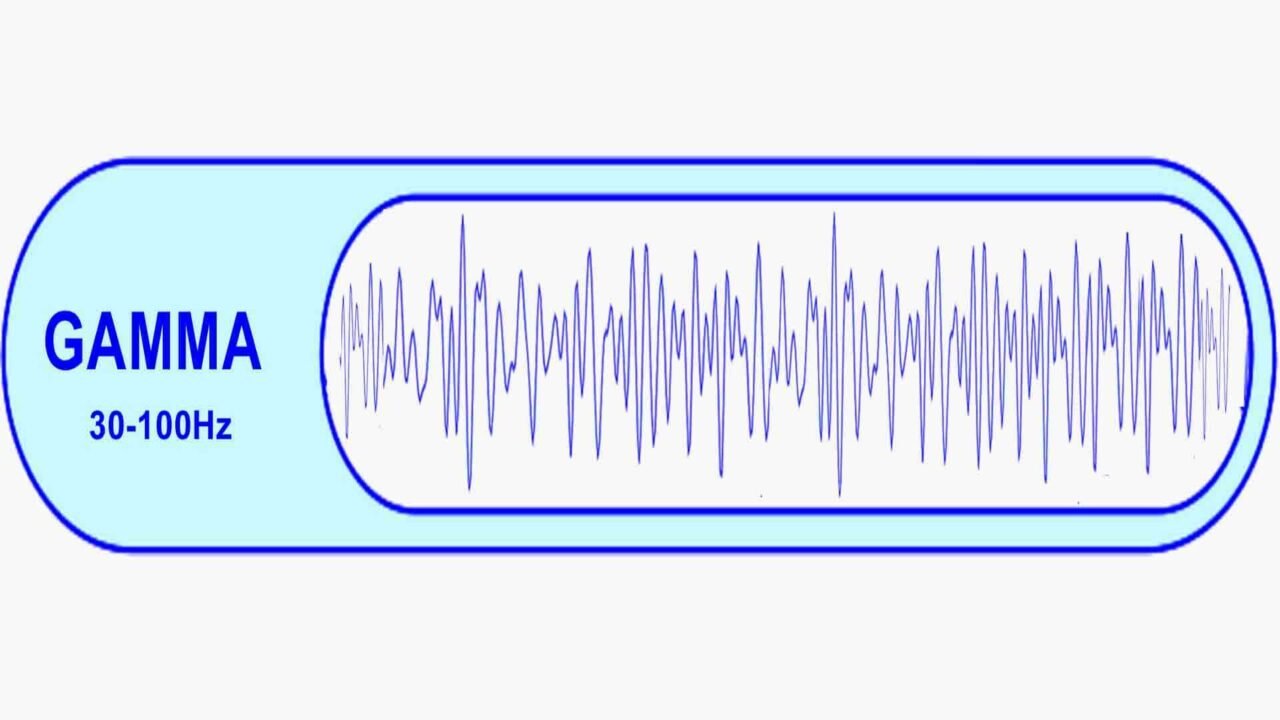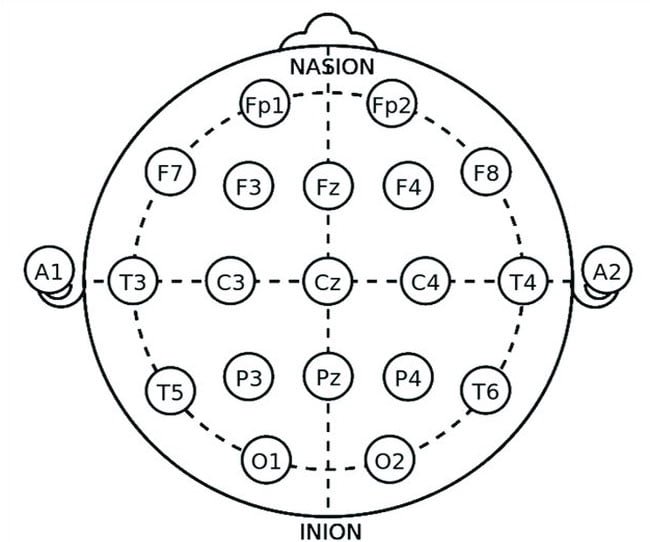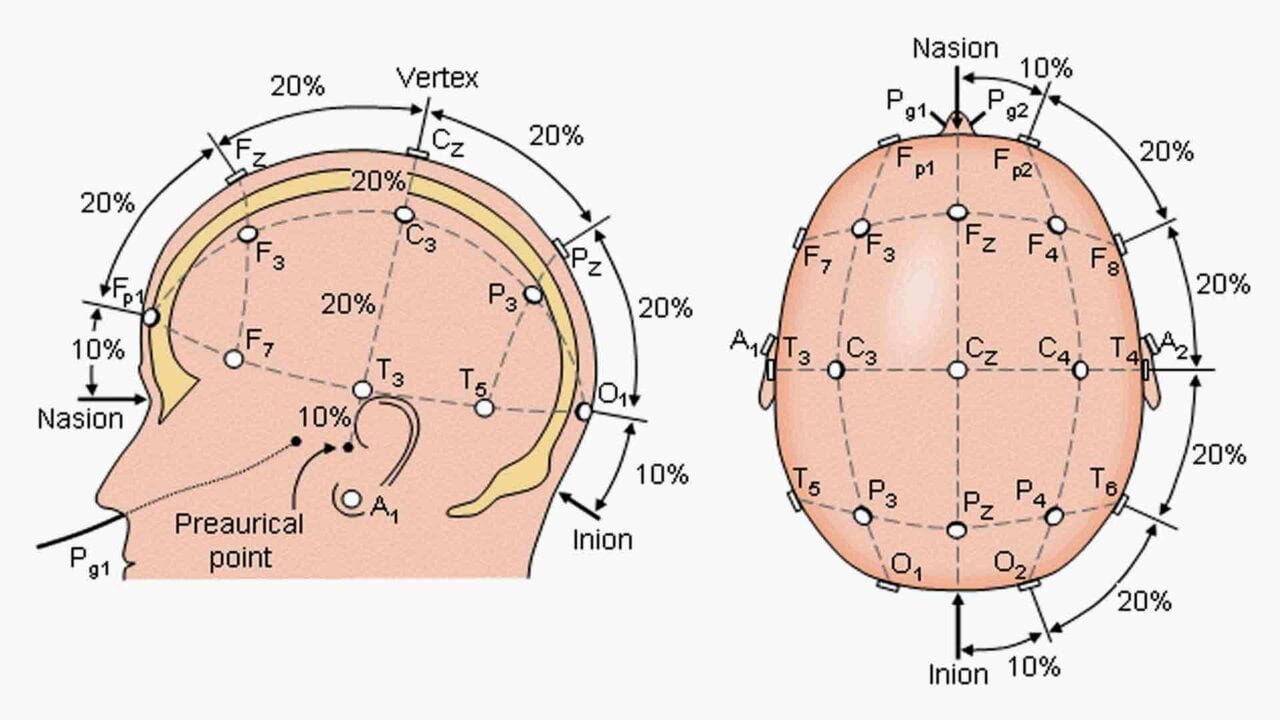UNDERSTANDING THE BRAINWAVES IN NEUROFEEDBACK
Registration of patterns of Brainwaves in Neurofeedback therapy/training is the first step to reveal its dysfunction and to regulate it to achieve the desired brainwave state at will. At the root of all our thoughts, emotions and behavior is the communication between neurons within our brains. Brain activity is changing under the influence of our thoughts, emotions, different disorders, etc. and cause changes in our behavior and health.
Table of Contents
ToggleTo fully understand the role of brainwaves in neurofeedback, it is necessary to have a basic understanding of brainwaves.
Neurons communicate with each other through electrochemical signals which can be measured as wave-like patterns called brainwaves. They can be measured by electroencephalography (EEG), a non-invasive method of recording electrical activity using sensors attached to the scalp.
There are five main patterns of brain waves: DELTA, THETA, ALPHA, BETA, and GAMMA. Each brainwave state corresponds to a different state of awareness.
We normally cycle in and out of these different brainwave states throughout the day and night. All brainwave states are essential but should be experienced appropriately — at certain times and in a certain proportion.
Brainwave frequencies are measured in Hertz (Hz), meaning cycles per second. The more cycles per second, the greater the Hertz value.
When slower brain waves are dominant we can feel sluggish, inattentive, depressed or dreamy. When higher frequencies abound, we are engaged in critical thinking, hyper-alertness or anxiety, but can also result in nightmares, hyper-vigilance, and impulsive behavior.
ROLE AND TYPES OF BRAINWAVES IN NEUROFEEDBACK
Understanding the brainwaves, its types, variation patterns with its appropriate clinical manifestations is paramount importance to organize effective Neurofeedback training/therapy.
Depending on the types of brainwaves in neurofeedback training there are two basic classical directions. It is either focusing on low frequencies (alpha or theta) brainwaves in neurofeedback to strengthen relaxation and focus or emphasizing on high frequencies (low beta, beta) brainwaves in neurofeedback for reinforcing activation, organizing, and inhibiting distractibility.
Neurofeedback treatment protocols mainly focus on the alpha, beta, delta, theta, and gamma training/treatment or a combination of them such as alpha/ theta ratio, beta/theta ratio, etc.
DELTA BRAINWAVES
Delta Waves (1-4 Hz) are slow brainwaves, which begin to appear in stage 3 of the sleep cycle, and by stage 4 dominate almost all EEG activity. At this stage, healing and regeneration are stimulated and are considered essential for the restorative properties of sleep.
An excess of delta waves when a person is awake may result in learning disabilities and Attention Deficit Hyperactivity Disorder (ADHD), and make it extremely difficult to focus. It has been found that individuals with various types of brain injuries produce delta waves in waking hours, making it extremely difficult to perform conscious tasks. Sleepwalking and talking tend to occur while delta production is high. See Neurofeedback protocol here.
THETA BRAINWAVES
Theta waves (4-8 Hz) are particularly involved in day-dreaming and sleep. Cortical theta is observed frequently in young children, but in older children and adults, it tends to appear during meditative, drowsy, or sleeping states. In theta, we are in a dream; vivid imagery, intuition and information beyond our normal conscious awareness. It’s where we hold our fears, troubled history, and nightmares. Theta is our gateway to learning, memory, and intuition. In theta, our senses are withdrawn from the external world and focused on signals originating from within.
When we are awake, excess theta levels can result in feeling scattered or day-dreamy and is commonly reported in ADHD. Too much theta in the left hemisphere is thought to result in lack of organization, whereas too much theta on the right hemisphere results in impulsivity. Theta in people with attention disorders is often seen more towards the front of the brain. See Neurofeedback protocol here.
ALPHA BRAINWAVES
Alpha waves (8-12 Hz) dominate during moments of quiet thought, and similar to meditative states. Alpha brain waves are present in deep relaxation and usually when the eyes are closed. It is an optimal time to program the mind for success and it also heightens your imagination, visualization, memory, learning, and concentration. Alpha waves aid overall mental co-ordination, calmness and alertness, mind/body integration and learning. The brain produces consistently higher magnitudes of alpha waves when the brain is in an idle state. This is why alpha is sometimes referred to as the idle brainwave. Some studies claimed that alpha rhythm has two subsets: lower alpha in the range of 8-10 Hz and upper alpha in the range of 10-12 Hz. It is believed that lower alpha is related to remembering action in semantic memory which is not the case for high alpha.
When the brain is healthy and well regulated, it produces more alpha waves on the right than on the left side. The voice of Alpha is your intuition, which becomes clearer and more profound the closer you get to 7.5Hz.
Alpha rhythm is most prominent in occipital derivations and attenuated by eye-opening. Alpha tends to be highest in the right hemisphere, and too little alpha in the right hemisphere correlates with negative behaviors such as social withdrawal. This is also seen in people with depression, particular with too much alpha frontally. Alpha is involved in active and adequate inhibition of the irrelevant sensory pathways. See Neurofeedback protocol here.
BETA BRAINWAVES
Beta waves (12-30 Hz) represent our normal waking state of consciousness when attention is directed at cognitive tasks and the outside world. Beta is ‘fast wave‘ activity and dominated when we are alert, attentive and engages in problem-solving, decision making and focussed mental activity.
Low beta or so-called Sensorimotor Rhythm (SMR) (12-15 Hz) is thought to be ‘fast idle’, or musing thought. It is reflecting mental alertness, physical relaxation and closely related to readiness for action and attentive listening.
Beta (15-20 Hz) reflects high-engagement and actively figuring things out, thinking, focusing, sustained attention, tension, alertness, excitement.
High Beta (20-30 Hz) is highly complex thought, integrating new experiences, high anxiety or excitement. Continual high-frequency processing is not an efficient way to run our brains, and can result in tension and difficulties relaxing, and if present at night, can result in difficulties settling the mind and falling asleep.
Beta waves tend to dominate in the left hemisphere, and too much beta on the right can be correlated with mania.
The brain produces consistently higher magnitudes of beta waves when the brain is externally focused, alert, involved in critical reasoning, thought and concentration. Beta represents the fastest processing speed and when the brain is well regulated, it produces more beta waves on the left than on the right side.
While Beta brain waves are important for effective functioning throughout the day, they also can translate into stress, anxiety, and restlessness. See Neurofeedback protocol here.
GAMMA BRAINWAVES
Gamma brainwaves (30-100Hz) have the highest frequencies of any brainwave, oscillating between 30 to 100 Hz. They are associated with peak concentration and high levels of cognitive functioning. A synchronous burst of gamma bandwidth has been found during “ah-ha” moments.
Low levels of gamma activity have been linked with learning difficulties, impaired mental processing, and limited memory, while high gamma activity is correlated with a high IQ, compassion, excellent memory, and happiness.
Gamma brainwaves are currently of limited clinical value, as it is argued that it cannot be effectively measured using current EEG technology, due to muscle contamination. While promising research has suggested that Gamma training can be successfully implemented to enhance intelligence, it will not be of proper clinical use until this issue of technology is resolved. See Neurofeedback protocol here.
ELECTROENCEPHALOGRAPHY. ELECTRODE PLACEMENT SYSTEM. REGISTRATION OF BRAINWAVES IN NEUROFEEDBACK
Simply an electroencephalogram (EEG) is the representation of the electrical activity of the brain. The EEG signals are having very low voltage amplitude levels ranging from 1 – 100 microvolts. These are also having very low frequencies ranging from about 1 Hz to 100 Hz as it was described above. ECG equipment amplifies the potentials received from the sensors in hundreds of thousands of times and writes them into the computer’s memory. The EEG waveform differs in their shapes and they show dramatic changes upon of the individual’s state.
The location of the electrodes is important when registering EEG, and the electrical activity simultaneously recorded from different points of the head can vary greatly. The most popular scheme used in the placement of electrode for the EEG picks up is the international 10-20 electrode placement system. As the cranial area is divided into four main regions, the electrodes are placed accordingly in the different regions. Main regions of the cranium are frontal, parietal, temporal and occipital regions. The electrodes placed in each region are denoted as F (Frontal), P (Parietal), T (Temporal) and O (Occipital). Odd/even numbers are associated with the left/right side of the brain region. In this set up the head is mapped by four standard points. They are nasion, inion and left and right ears. The letter z is used as Pz suggests that scalp location falls along the central line running between the nasion and the inion. Fp1 and Fp2 are respectively related to the left and right poles of the forehead.
10-20 electrode placement system
In 10-20 electrode placement system, we use 20 electrodes. One electrode is used for grounding the subject. When recording EEG using two main methods of electrode application: bipolar and unipolar.
In a unipolar arrangement, one of the electrodes is located at a point that is conventionally considered electrically neutral (left/right earlobes (respectively A1/A2), nose bridge) and takes as common to all channels. In a unipolar recording, the ECG reflects the activity one of the points/leads relatively to electrically neutral point/leads (for example, the activity of the frontal or occipital leads relatively to the earlobe). So to measure the bioelectric potential from the brain, we use any one of the nineteen electrodes and, the common electrode.
In a bipolar system, both electrodes are placed in electrically active points of the scalp and any of the two electrodes is used for the measurement. In the bipolar recording, an EEG record reflects the result of the interaction of two electrically active points (for example, frontal and occipital leads).
The choice of one or another variant of recording depends on the objectives of the study. In research practice, the unipolar registration option is more widely used, since it allows studying the isolated contribution of a particular brain area to the studying process.
Before placing the electrodes the nasion-inion distance is measured. Then points are marked on the shaved head at 10%, 20%, 20%, 20%, 20% and 10% of this length. Then the electrode is placed on these points. Hence this system is called 10-20 electrode system.
BRAINWAVES IN NEUROFEEDBACK. MEDICAL AND NON-MEDICAL APPLICATION OF NEUROFEEDBACK
The brain typically uses cues from the environment to regulate above described brainwave patterns. Yet overly dominant or other dysfunctional patterns may produce brainwave dysregulation and accompanying behavioral problems. Brainwave dysregulation is detected through indications of abnormal brainwave ratios as measured by EEG equipment. Neurofeedback is a form of biofeedback that allows individuals to change deregulated brainwave rhythms.
Neurofeedback teaches you to consciously control your brain waves to achieve the desired brainwave state at will. Neurofeedback is used for both medical and non-medical uses, and the dividing line between them may be thin. Non-medical application of neurofeedback can be considered primarily as personal improvement and conditioning for the brain and mind: to improve relaxation, attention, focus, concentration, and self-awareness, or as an adjunct to meditation, counseling, hypnosis, or achieving altered states of consciousness. It can be done without professional intervention. In cases where it is desired to relieve the conditions of a medical problem, professional help should be sought. Detailed information regarding indications for neurofeedback use and method for peak performance and for treatment of different disorders you can find in this website in the appropriate pages.
It is a fact that Neurofeedback systems are designed to allow the user to control a computer for recreational, educational, or entertainment purposes are not a medical instrument. You can find detailed information regarding indications, methods, and descriptions of different neurofeedback devices for home use here or go to shop.
However, if direct benefits are claimed for relaxation or relief from the symptoms of disorders, then the device is considered medical.
In the nonclinical embodiment, most of the same functions and capabilities are present, but they are presented in the context of an educational and recreational device. It is nonetheless true that the actual benefits may be essentially the same in both embodiments depending on how the user configures and applies the device, although the labeling and claims are different. The same instrument is being provided in both cases, but with different intent.
Clearly, the difference lies primarily in the claims, and in the expectations and applications of the user.
For example, although neurofeedback can be used to improve attention and concentration, and this can be considered as a personal improvement application, in cases of suspected or diagnosed Attention Deficit Disorders (ADD), the use of this procedure might be regarded as a medical procedure. It may thus be argued that neurofeedback treatment intended to reduce the symptoms of ADD, especially when the removal from stimulants (Ritalin, etc) is desired, that neurofeedback is being used in a medical context. However, if a parent, teacher, or counselor uses neurofeedback in a home or educational setting to educate a child on how to reach a state of relaxed attentiveness, that the treatment may be considered education, not treatment.
Neurofeedback takes advantage of the brain’s ability to change itself through a process known as Neuroplasticity. It utilizes the same learning process that occurs whenever we acquire a new skill. The brain learns by forming connections between nerve cells and utilizing important pathways that connect different locations in the brain. The more frequently you utilize these pathways the better the brain becomes at performing the associated task. This type of leaning is a type in which responses come to be controlled by their consequences. Quite simply, Neurofeedback offers the perfect learning conditions, since it facilitates awareness of when the brain is producing healthier brainwave patterns, provides reinforcement for the positive change and multiple opportunities to provide practice during a training session. More detailed information regarding the type of neurofeedback training you can find here.

